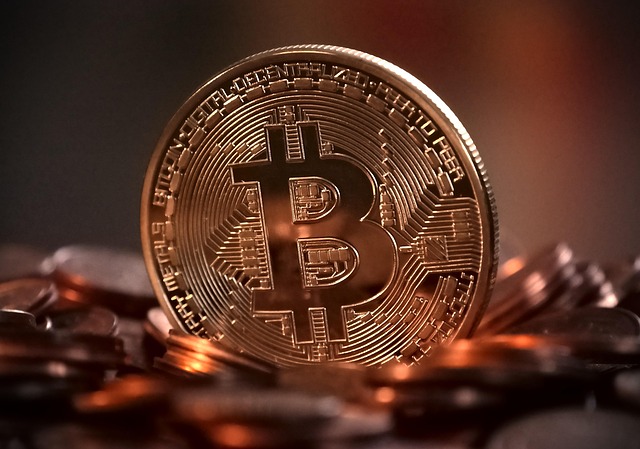Bitcoiner PlanB slams ETH: ‘Centralized & premined’ shitcoin
Pseudonymous Bitcoin stock-to-flow (S2F) model creator PlanB attacked Ethereum and mocked the project’s co-founder, Vitalik Buterin.PlanB mockingly reposted a June 2022 X post by Buterin in which the Ethereum co-founder said S2F “is really not looking good now.” PlanB responded with a new posting stating, “Ethereum is really not looking good now.”Source: PlanBIn his response to Buterin’s criticism from years ago, PlanB claimed Ethereum and the network’s coin, Ether (ETH), are centralized and premined, pointing to its shift to proof-of-stake (PoS) and changes in its issuance rate. He said that those features “are harmful and deserve all the mockery they get,” echoing Buterin’s old comment about S2F.Related: Bitcoin analyst PlanB transfers Bitcoin to ETFs to avoid ‘hassle with keys’PlanB’s criticism of EthereumIn a separate X post, PlanB explained that an Ethereum full node requires nine terabytes of disk space, meaning he “can not run it” on his hardware. The kind of node in question is probably an Ethereum archival node, which, according to Etherscan data, requires over 21.8 terabytes (TB) with the Geth client.An Ethereum full node running the Geth client that prunes older states with the default settings requires 1.28 TB, according to Etherscan data. The Bitcoin (BTC) and Ethereum communities have long debated what constitutes a full node.This type of pruned node cannot access the full historical data or generate Merkle proofs for old blocks, which limits its research and bug-finding applications. Still, such nodes can engage in full trustless block and transaction validation.Bitcoin’s full nodes require under 700 gigabytes (0.7 terabytes), according to Statista data, and also require much less computing power. This means that users can run Bitcoin full nodes much more easily, leading to a higher node count and higher network decentralization.Not everyone views the criticism as founded. Jeremiah O’Connor, chief technology officer and co-founder at crypto cybersecurity firm Trugard, told Cointelegraph:“PlanB’s take is classic Bitcoin maxi energy — loud, confident and missing half the picture.“O’Connor explained that Ethereum and Bitcoin serve two different purposes. He said that “Ethereum nodes are bigger and more complex” since Ether “isn’t just digital gold — it’s a full-on global computer.”“Of course it’s heavier.“He conceded that users relying on centralized data providers like Infura is a problem. Still, he claimed that every ecosystem engages in centralization tradeoffs and that Ethereum developers are working to address the issue, and “it’s evolving fast.”“Calling ETH a “shitcoin” because it’s not Bitcoin is like calling smartphones a scam because they aren’t landlines,“ he said.He added that the two are different tools with differing purposes. He views Bitcoin as a “rock-solid value storage” and Ethereum as “where the builders are,” and said that “both matter” and “complement each other.”Related: Can the Ethereum blockchain roll back transactions? Understanding the limits and risksButerin as a “single point of failure”PlanB also questioned Buterin’s influence on Ethereum’s development, calling him a “single point of failure.” However, Ethereum Foundation co-executive director Tomasz Stańczak recently announced that Buterin is stepping back from day-to-day operations to focus on research.PlanB also raised an issue with Ethereum rolling back transactions following the 2016 DAO hack:“The fact that this is even possible should worry you.“Bybit CEO Ben Zhou suggested an Ethereum rollback following the exchange’s $1.4 billion hack. Still, many in the community argued that a rollback happening now, with Ethereum being a more mature network, would be next to impossible.Bitcoin itself had a comparable incident in its early history as well. On Aug. 15, 2010, an exploit resulted in a transaction that minted 184 BTC on the network in block 74638.Satoshi Nakamoto (still involved in development at the time) and other core developers released an update that rolled back the network to block 74637 and patched the vulnerability. In other words, Bitcoin saw its own blockchain rollback in its early days.Other points raised by PlanB include Ethereum switching to PoS, which he claims has consequences for the price. He suggested that changes to issuance and governance undermine Ethereum’s value proposition compared to Bitcoin’s fixed and predictable supply.Magazine: Crypto ‘more taboo than OnlyFans,’ says Violetta Zironi, who sold song for 1 BTC
Unlocking the potential of dormant Bitcoin in DeFi
Opinion by: Amitej Gajjala, co-founder and CEO of KernelDAOBitcoin is the principal asset of the cryptocurrency world and even one of the world’s top 10 most valuable assets, recognized for its role as a store of value. Yet a huge percentage of the Bitcoin (BTC) supply remains dormant for years, meaning the crypto market only works with a fraction of the circulating supply each year. This idle Bitcoin has an enormous amount of untapped financial potential.Bitcoin’s principal narratives are “store of value” and “never sell.” Today’s decentralized finance (DeFi) tools, however, enable yield gain by holding Bitcoin and taking advantage of dormant Bitcoin, which just sits in investors’ wallets and does nothing. Existing dormant Bitcoin is not being fully utilized Dormant Bitcoin has not been used for long periods, usually one or more years. According to Glassnode, as of early 2025, the active supply that has not moved in more than one year is approximately 62%.This Bitcoin is held in wallets that show no activity on the blockchain and remain inactive for various reasons. These could be intentional long-term holding strategies or even permanent loss as a result of negligence or the death of their users. Let’s put aside the rest of the reasons and focus on long-term Bitcoin holding strategies. The existence of this group implies that they could enter the market at any time, producing significant volatility in the price of Bitcoin. Why aren’t we using that Bitcoin in DeFi right now? Activating dormant Bitcoin will make waves in the marketIf large quantities of dormant Bitcoin were to reactivate immediately, it could significantly affect the cryptocurrency market, creating a noticeable event. These movements could dramatically affect Bitcoin’s price in a negative way due to potential selling pressure and influence the market with a significant increase in active circulating supply.Recent: Stablecoin presence key to blockchain legitimacy, says ZachXBTIf the reactivated Bitcoin is, however, reintegrated into productive DeFi ecosystems rather than sold en masse, it could provide liquidity without destabilizing the market. With that amount of active liquidity, Bitcoin would not only be a “store of value” but also a productive asset with utility and application.Let’s look at the announcement of the creation of a Bitcoin strategic reserve in the United States. One of the key points of this reserve is that it will follow budget-neutral strategies without selling the estimated 198,000 BTC held by the government. Those conditions are perfect for putting this Bitcoin into restaking and using it in DeFi to obtain rewards. Just picture all the gains the US could make by using most of its Bitcoin reserves in that way, without selling.We need to explore Bitcoin’s potential in DeFiIntegrating dormant Bitcoin into DeFi platforms offers interesting Bitcoin and decentralized finance opportunities. Bitcoin would encourage transactions and fees on the network to support miners. The total value locked (TVL) in DeFi will be tremendous compared to all the liquidity Bitcoin will add to the DeFi market.Advances like wrapped tokens and crosschain bridges have enabled Bitcoin holders to engage in flash loans, lending, staking, restaking and yield farming on DeFi platforms. The current levels are, however, insufficient and will not be the only way to take advantage of this enormous liquidity injection. As of March 10, Bitcoin’s TVL in DeFi stood at over $5 billion, according to DefiLlama data. This represents only 6% of the TVL of all the current blockchains on the market, with Ethereum the king at 52.56% with $48 billion. If Bitcoin became the new king of TVL in DeFi, it would only need to use some of the dormant Bitcoin mentioned above.In this scenario, Bitcoin will provide more stability to DeFi, as its holders, including institutional and long-term investors, are not prone to selling during market downturns. In addition, activating even a small fraction of currently idle Bitcoin could unlock billions of dollars of liquidity for decentralized finance applications.The best way to use BTC in DeFi is restakingToday, restaking is emerging as an innovative, engaging way to integrate Bitcoin into DeFi while maintaining its appeal as a conservative, secure investment vehicle. Restaking enables holders to stake their assets in decentralized protocols and earn passive income while contributing to the economic security of the network.This mechanism offers several benefits, including passive income with minimal risk and economic security, by supporting the development of new products. It parallels traditional finance by offering predictable returns while preserving capital, which appeals more to conventional investors.Restaking aligns with the conservative mindset typical among many Bitcoin holders, allowing them to participate in innovations within the DeFi space. Restaking is desirable for every Bitcoiner to obtain yield with their reserves.Dormant Bitcoin is a massive opportunity for DeFiDormant Bitcoin is a vast, untapped reservoir within the Web3 ecosystem. By integrating Bitcoin into DeFi platforms today, individual investors and the broader ecosystem will significantly benefit from the increased stability, liquidity and growth opportunities.Opinion by: Amitej Gajjala, co-founder and CEO of KernelDAO.
Gold-backed vs USD-backed stablecoins: Key differences
What are gold-backed stablecoins, and how do they work? Gold-backed stablecoins are digital currencies pegged to physical gold reserves and designed to maintain a stable value. The concept of gold-backed digital currencies dates back to the early days of cryptocurrency, with developers aiming to create a reliable store of value. Each gold-backed stablecoin represents a specific quantity of gold. For instance, one token might be linked to 1 troy ounce of gold. A troy ounce is a unit of weight used explicitly for weighing precious metals like gold, silver and platinum; it is equal to 31.1034768 grams. A third party typically holds the gold reserves to ensure security and transparency. The issuing entity is responsible for maintaining an equivalent amount of physical gold for every token in circulation. The token’s price remains closely aligned with the market value of gold. Buyers pay gold’s spot price for a token. Similarly, if the stablecoin fails, the tokenholders can redeem their tokens for the gold. Practically, the gold is liquidated for electronic fiat transfers.Regulators classify gold-backed stablecoins as commodity-backed stablecoins or asset-referenced tokens (ARTs), depending on jurisdiction. Examples of gold-backed stablecoins include Tether Gold (XAUT), Paxos Gold (PAXG) and Alloy (aUSDT).Did you know? On April 1, 2025, Tether Gold (XAUT) traded at $3,165. Its market capitalization was about $780.3 million, with a daily trading volume of $11.03 million. Advantages of gold-backed stablecoins Gold-backed stablecoins combine the stability of gold with the flexibility of digital assets. Their blockchain-based nature offers benefits beyond traditional paper gold. Here are a few advantages of gold-backed stablecoins:Flexible alternative to physical gold: Gold-backed stablecoins function as blockchain-based representations of gold, offering a more efficient and flexible alternative to holding physical bullion. Instant global trading: Unlike traditional gold ownership, these tokens can be stored in cryptocurrency wallets from which you can transfer instantly and trade globally with a nominal transactional fee.Access to DeFi applications: They also enable decentralized finance (DeFi) applications, expanding their usability beyond traditional gold investments.Better security: Physical gold is vulnerable to theft, loss and damage. Gold-backed stablecoins, stored on blockchain networks, can be more secure.Programmability: Gold-backed stablecoins are programmable because they exist on blockchain networks such as Ethereum. This allows them to interact with smart contracts and work with decentralized apps (DApps).Divisibility: Splitting physical gold or even paper gold is challenging. However, you can split a single token into several decimal places, which can be recorded on the blockchain.Make gold more accessible: Gold-backed tokens enable you to easily access gold. An ounce of gold may be expensive, but you can easily buy 0.001 of a token. Interoperability: When you release a token on a widely used network like Ethereum, it is instantly operable with DApps, DeFi platforms and wallets supported by the network.Diversification of funds: Investing in gold-backed stablecoins enables you to diversify your funds. It is a unique type of asset that protects you against currency value drops. What are USD-backed stablecoins, and how do they work? USD-backed stablecoins are cryptocurrencies designed to maintain a stable value by being pegged to the US dollar. Each token is typically backed by an equivalent amount of US dollars or cash-equivalent assets held in reserve by a financial institution or trust.For every USD-backed stablecoin issued, the issuing entity must maintain a corresponding reserve amount to guarantee its value. This ensures that holders can always redeem their tokens for an equivalent dollar amount. Examples of USD-backed stablecoins are Tether (USDt), USDC (USDC) and Binance USD (BUSD), all of which are used in trading, payments and DeFi.You can buy and sell stablecoins through crypto exchanges like Binance or Coinbase. To purchase, create an account, complete verification, deposit fiat or crypto and choose a stablecoin such as USDt or USDC. To sell, go to the trading section, select your stablecoin, and exchange it for fiat or another crypto. Some wallets and peer-to-peer (P2P) exchanges also support stablecoin trading.Did you know? The EU’s Markets in Crypto-Assets Regulations (MiCA) have forced crypto exchanges to delist USDT and other non-compliant stablecoins, resulting in a growing market for Euro-backed stablecoins. USDC continues to be a prominent USD alternative in the region. Advantages of USD-backed stablecoins USD-backed stablecoins offer several advantages, making them a critical part of the crypto ecosystem. By combining the reliability of fiat currency with the efficiency of blockchain, USD-backed stablecoins play a vital role in digital finance. Here are a few advantages of USD-backed stablecoins:Steady value: Unlike traditional cryptocurrencies, which experience high volatility, stablecoins maintain a steady value, making them an ideal unit for payments, particularly in exchange for goods and services.Liquidity and accessibility: USD-backed stablecoins are widely accepted across crypto exchanges, payment platforms and DeFi applications. This allows traders to move funds quickly between assets without converting crypto back to fiat currency, reducing transaction costs and delays.Transparency: Issuers generally provide regular audits and reports on their reserves, which enables users to verify that actual USD holdings back each token. This transparency builds trust among users, issuers and regulators.Fast, low-cost international payments: Operating on blockchain networks, USD-backed blockchain networks facilitate fast, low-cost international payments without relying on traditional banking systems. This makes them a preferred option for remittances and cross-border trade.Safe haven during market downturns: USD-backed stablecoins offer stability during periods of market volatility. Investors and traders often convert volatile crypto holdings into stablecoins to protect their value without exiting the crypto market entirely.Still, please note that stablecoins may depeg occasionally because of several macro and microeconomic factors. Macro factors include changes in economic conditions, such as inflation or an increase in interest rates. Micro variables involve differences in market conditions, such as changes in the underlying collateral and problems with liquidity. When Silicon Valley Bank failed in March of 2023, the USDC stablecoin deviated from its peg because $3.3 billion of its reserves were held there.Did you know? Stablecoins are of four types: fiat-collateralized, crypto-collateralized, algorithmic and commodity-collateralized. Algorithmic stablecoins have gradually gone out of favor. Key differences between gold-backed and USD-backed stablecoins Gold-backed and USD-backed tokens are stablecoins, yet they differ in several ways. This comparison explores the fundamental differences, focusing on their backing assets, price stability, liquidity, adoption and primary use cases:Backing asset: Physical gold vs fiat reservesGold-backed and USD-backed stablecoins differ primarily regarding the collateral that supports their value. Gold-backed stablecoins are tied to physical gold, usually at a fixed ratio, while some USD-backed stablecoins are backed by a reserve of US dollars, short-dated and cash deposits.Price stability: Long-term vs short-termThe value of gold-backed stablecoins fluctuates depending on the market price of gold, which can experience short-term volatility but tends to appreciate over the long run. USD-backed stablecoins maintain a 1:1 peg to the dollar, ensuring more predictable short-term stability. Their value remains steady unless external factors, such as regulatory changes or mismanagement of reserves, impact the peg. Liquidity and adoption: Use of USD-backed in DeFi applicationsUSD-backed stablecoins are more liquid and widely accepted in the crypto ecosystem, including exchanges, payment systems and DeFi applications. They are frequently used for trading and lending. Moreover, many countries in Latin America, such as Bolivia, have adopted USDC for payments. Gold-backed stablecoins, while useful for preserving value, are less commonly integrated into DeFi protocols due to low liquidity concerns. Use cases: Value storage Gold-backed stablecoins serve as a hedge against inflation, appealing to investors seeking growth. USD-backed stablecoins are preferred by investors seeking stability and value storage. USD-backed stablecoins are used for everyday transactions, trading and financial services, thanks to instant liquidity and ease of use.Regulatory considerations: ComplianceGold-backed stablecoins and fiat-backed stablecoins differ in regulation due to their underlying assets. For instance, specific regulations such as the Guiding and Establishing National Innovation for US Stablecoins Act (GENIUS Act) and the Stablecoin Transparency and Accountability for a Better Ledger Economy (STABLE) Act have emerged in the US for USD-backed stablecoins. However, no specific regulations exist for gold-backed stablecoins as of March 31, 2025, though they are expected to adhere to the usual banking and financial regulations. Can gold-backed stablecoins surpass USD-backed coins in adoption? Two factors favoring gold-backed stablecoins are their inflation-resistant properties and long-term stability. As Bitcoin advocate Max Keiser points out, gold enjoys greater global trust than the US dollar, particularly among nations with strained relations with the US. But is this enough for gold-backed stablecoins to get ahead of its more celebrated competitor?USD-backed stablecoins, often under scrutiny in the days of the Biden administration, are now enjoying the support of the US government headed by President Donald Trump. The current dispensation views USD-backed stablecoins as a potent tool to maintain the status of the US dollar as the world’s reserve currency. While the Trump administration has been crypto-friendly since it took over, its support of the GENIUS Act and the STABLE Act, which await Congressional approval, is further testimony of this approach.Treasury Secretary Scott Bessent has emphasized stablecoins as a strategic tool for sustaining the dollar’s reserve currency status. Federal Reserve Governor Christopher Waller has echoed this sentiment, supporting stablecoins as a means to uphold US dollar hegemony.Still, countries including Russia, China and Iran, arch-rivals of the US, might prefer gold-backed stablecoins over USD-backed stablecoins because the bullion-powered coins may help them limit the influence of the US dollar. According to Keiser, China and Russia collectively hold around 50,000 tons of gold, more than officially reported. If true, this gold could be used to roll out gold-backed stablecoins.If gold-backed stablecoins gain wider adoption, they could challenge the US government’s efforts to maintain dollar dominance through stablecoins. To that end, stablecoin issuer Tether introduced Alloy (aUSDT) in June 2024, a gold-backed digital asset tied to Tether Gold (XAUT), a token representing claims on physical gold. Gold-backed stablecoins resemble the gold-backed US dollar before 1971. That was the year when President Richard Nixon abolished the convertibility of the US dollar to gold. XAUT has enjoyed a 15.7% price increase year-to-date, suggesting the growth potential of the bullion-backed stablecoins.While gold-backed stablecoins present a compelling alternative, the battle for dominance between gold and USD-pegged stablecoins remains ongoing, influenced by geopolitical factors, financial policies, and market demand.
CZ receives fake ‘Grok’ coins amid new wave of Elon Musk scam tokens
Scammers are once again capitalizing on the popularity of Elon Musk’s artificial intelligence chatbot Grok, with fake tokens once again emerging as part of potential phishing attacks.A wallet linked to former Binance CEO Changpeng “CZ” Zhao received 90 million fake Grok (GROK) tokens on April 21, according to blockchain security firm PeckShield.The tokens are “likely a scam,” since the “deployer distributed it to multiple addresses via multisend,” PeckShield said.Source: PeckShieldAlertThe X platform’s Grok AI chatbot has no official cryptocurrency and no plans to launch one in the future.Related: Bitcoin up 33% since 2024 halving as institutions disrupt cycleFake tokens related to the Grok token first emerged in 2023 when a scammer deployed an ERC-20 Grok token on Ethereum, which led to an over 90% drop after the deployer sold 0.5% of the total supply, according to blockchain data visualization platform, Bubblemaps.Fake GROK ERFC-20 token crash, 2023. Source: Bubblemaps Scammers often capitalize on the credibility of social media platforms, large brands, or celebrities like Elon Musk to cultivate a sense of trust with victims.Meta was the most mimicked brand in phishing reports filed throughout 2024, according to a report by email security provider Mailsuite.US brands are often impersonated by scammers. Source: MailsuiteCoinbase was the most impersonated brand by scammers in the crypto industry, but Meta was targeted by over 25 times as many scammers as the cryptocurrency exchange.Related: Bitcoin rally above $100K may follow US Treasury buybacks — Arthur HayesElon Musk-related scams and fake coins see a resurgenceElon Musk-related scams and fake tokens are seeing a resurgence as scammers continue vying for investors’ crypto holdings.A fake announcement claiming to be an official “AI Elon Musk stream” giving away $20,000 worth of cryptocurrency was flagged on April 14 by crypto recovery and security advocate, Denis Thomas.Source: Denis Thomas Multiple other Elon Musk-related memecoins were launched on the BNB Smart Chain in recent weeks, according to a scam detector platform, Coinspeedrun.Source: CoinspeedrunPhishing scams like address poisoning involve tricking victims into sending assets to fraudulent wallet addresses.Phishing scams cost the crypto industry over $1 billion across 296 incidents in 2024, making them a major threat, according to blockchain security firm CertiK.Magazine: Down to $200 one day, Pixels founder had $2.4M the next: Luke Barwikowski, X Hall of Flame
El Salvador works with Nvidia to develop sovereign AI infrastructure
El Salvador, the first country in the world to adopt Bitcoin as legal tender, is working with the computer chip giant Nvidia to implement artificial intelligence for national development.El Salvador signed a letter of intent to collaborate with Nvidia on “sovereign AI to drive innovation and economic growth,” the National Bitcoin Office (ONBTC) of El Salvador announced on X on April 21.As part of the collaboration, El Salvador will benefit from Nvidia’s AI tools, resources and expertise, enabling the development of sovereign AI capabilities targeting priorities related to culture, language, environment and economy.“El Salvador will focus on building domestic AI infrastructure, upskilling the workforce, and creating solutions to address local challenges such as improving healthcare delivery, advancing education, and boosting economic productivity,” the announcement said.AI training for state officials and developersEl Salvador’s latest collaboration with Nvidia marks the country’s commitment to encouraging AI usage to optimize multiple processes within the government and society.With its new AI push, El Salvador intends to establish AI training programs for developers, researchers and government officials to “ensure the nation has the talent to sustain its AI ambitions.”Source: The Bitcoin OfficeOne example includes the creation of AI-driven models to forecast weather and rainfall, which would support emergency response, protect residents in landslide-prone areas and optimize hydroelectric power management.Not the first AI initiative for El SalvadorEl Salvador’s Nvidia partnership adds to a growing list of AI-focused initiatives.In March 2025, the ONBTC announced Salvador’s university-level public education AI program CUBO_ai, touting it as the “only national education program bringing in top-tier field experts.” The program was announced with support from major Bitcoin bull Cathie Wood, who is expected to give the first lecture as part of the program.An excerpt from the CUBO_ai announcement by El Salvador. Source: The Bitcoin OfficeLast year, Wood predicted that El Salvador’s Bitcoin (BTC) and AI plans may boost GDP tenfold by 2029.Related: Only 11% of El Salvador’s registered Bitcoin firms operationalWhile El Salvador has been aggressively introducing AI initiatives, its Bitcoin ambitions have been somewhat deterred.In early March, the International Monetary Fund moved to restrict further Bitcoin purchases by El Salvador as part of an extended $1.4 billion funding arrangement with the country. However, the government has continued stacking 1 Bitcoin a day, raising questions about the implications of the deal with the IMF.Magazine: Your AI ‘digital twin’ can take meetings and comfort your loved ones
Pavel Durov says Telegram would exit markets before betraying users
Telegram CEO Pavel Durov expressed concerns over a growing threat to private messaging in France and other European Union countries, warning that Telegram would rather exit certain markets than implement encryption backdoors that undermine user privacy.In an April 21 post to his “Du Rove’s channel” on Telegram, he posted a message about the EU’s increasing efforts to weaken messaging encryption by adding backdoors, a method that would allow authorities to bypass encryption and access private user data.Durov cited initiatives from French and EU lawmakers to require messaging apps like Telegram to implement backdoors for police access and stressed Telegram’s commitment to digital privacy.“Telegram would rather exit a market than undermine encryption with backdoors and violate basic human rights,” Durov stated, adding: “Unlike some of our competitors, we don’t trade privacy for market share.”Backdoors can be exploited by criminalsIn his message, Durov highlighted that the biggest problem behind encryption backdoors lies in their accessibility not only by authorities but also by hackers and foreign agents.“It’s technically impossible to guarantee that only the police can access a backdoor,” Durov said, adding that backdoors would put users’ private messages at risk of being compromised.He added that criminals would likely turn to lesser-known apps and use virtual private networks (VPNs) to avoid detection, rendering such regulations ineffective. Telegram “never disclosed a single byte” of private messagesDurov said that while Telegram complies with valid court orders in some jurisdictions, such as disclosing IP addresses and phone numbers found to be involved in criminal activity, it has never exposed any private messages:“In its 12-year history, Telegram has never disclosed a single byte of private messages. In accordance with the EU Digital Services Act, if provided with a valid court order, Telegram would only disclose the IP addresses and phone numbers of criminal suspects — not messages.”He urged privacy advocates to keep communicating with lawmakers and promote encryption as a protection tool of privacy and safety for ordinary people, rather than see it as a criminal tool. “Losing that protection would be tragic,” Durov said.“The battle is far from over”Although the French National Assembly rejected a proposal to allow hidden access to private messages in March, Durov said the EU’s war on digital privacy is far from over.Durov cited the European Commission’s “ProtectEU” proposal from early April. The proposal aims to find “technological solutions to enable lawful access to data by law enforcement authorities in 2026.”An excerpt from the EC’s ProtectEU proposal. Source: EUThe proposal has been heavily criticized by digital privacy advocates and some European lawmakers, with Finnish MEP Aura Salla suggesting that introducing encryption backdoors “fundamentally undermines the very cybersecurity principles ProtectEU aims to uphold.”Related: EU could fine Elon Musk’s X $1B over illicit content, disinformation“No country is immune to the slow erosion of freedoms. Every day, those freedoms come under attack — and every day, we must defend them,” Durov concluded.Durov’s warning about threats to privacy and freedom in the EU comes amid an ongoing legal case in France against the Telegram CEO involving allegations of facilitating a platform that enables illicit transactions.According to French prosecutors, Durov faces up to 10 years of prison time in addition to a $550,000 fine if convicted.Magazine: Altcoin season to hit in Q2? Mantra’s plan to win trust: Hodler’s Digest, April 13 – 19
Michael Saylor’s Strategy bagged 6,556 Bitcoin for $555.8M last week
Michael Saylor’s Strategy, one of the world’s largest publicly listed corporate Bitcoin holders, added another major purchase to its growing portfolio as the cryptocurrency trades near $85,000.Strategy acquired 6,556 Bitcoin for $555.8 million from April 14–20, at an average price of $84,785 per coin, the firm announced in its latest Form 8-K filing with the United States Securities and Exchange Commission.The latest purchase accounts for 1.2% of Strategy’s total Bitcoin holdings of 538,200 BTC as of April 20, acquired for the aggregate amount of $36.5 billion at an average price of $67,766 per BTC.An excerpt from Strategy’s Form 8-K filing. Source: StrategyThe latest Bitcoin purchase was funded using proceeds from the Common ATM and STRK ATM stock offerings, including the sale of 1,755,000 Strategy shares for $547.7 million and 91,213 shares of Series A preferred stock sold for $7.8 million.Strategy expands buying after a pauseThe latest purchase follows Strategy’s 3,459 BTC acquisition reported on April 14, which was the first announced purchase by the firm after March 31.Prior to that, Strategy did not report a Bitcoin buy between March 31 and April 6, breaking its usual cadence as Bitcoin fell below $87,000.Strategy has acquired 91,800 Bitcoin so far in 2025, accounting for 17% of its total BTC holdings.This is a developing story, and further information will be added as it becomes available.Magazine: Your AI ‘digital twin’ can take meetings and comfort your loved ones
Circle, BitGo about to apply for bank charter, others may follow: WSJ
Major cryptocurrency firms, including stablecoin issuer Circle and crypto custodian BitGo, are reportedly considering applying for bank charters or licenses.According to an April 21 Wall Street Journal report citing people familiar with the matter, Circle, BitGo and other firms are considering applying for some form of banking license. Other firms cited include the publicly traded US-based crypto exchange Coinbase and the stablecoin issuer Paxos.Back in 2021, the US Office of the Comptroller of the Currency already granted a preliminary conditional approval for a US bank charter to Paxos. The report comes as the US continues to reshape local stablecoin regulations.US Federal Reserve Chair Jerome Powell recently said that as digital assets gain mainstream adoption, establishing a legal framework for stablecoins is a “good idea.” Speaking at a recent event in Chicago, Powell recognized that after a “wave of failures and frauds,” the crypto space delivered a consumer use case that “could have wide appeal.”Related: Stablecoins are powering deobanksA stable geniusThe US House Financial Services Committee passed a Republican-backed stablecoin framework bill earlier in April. The bill approved by the committee is the Stablecoin Transparency and Accountability for a Better Ledger Economy (STABLE) Act.This bill is moving forward alongside the Guiding and Establishing National Innovation for US Stablecoins (GENIUS) Act. The STABLE and GENIUS bills differ in how they would regulate the stablecoin industry.The latter was the first one to be introduced and made its way past the US Senate Banking Committee in mid-March. While the STABLE Act emphasizes strict federal oversight, the GENIUS Act seeks a more flexible path that includes state and federal regulation.The STABLE Act enforces a two-year moratorium on issuing collateralized stablecoins backed by self-issued digital assets. It also mandates that stablecoin reserves be held separate from business funds to ensure that customer deposits are not used for operations.The GENIUS Act establishes a legal framework for stablecoin payments and aims to support US-based stablecoin issuers to reinforce the dollar’s global dominance. The bill also includes stricter rules, such as enhanced Anti-Money Laundering (AML) safeguards, reserve and liquidity standards, and sanctions checks.Under the GENIUS Act, stablecoin issuers are considered financial institutions covered by the Bank Secrecy Act, which means they fall under strict AML rules. User verification and reporting of suspicious activity would also be required.Related: Crypto’s debanking problem persists despite new regulationsWhy a bank charter?The companies cited in the report had not responded to Cointelegraph’s inquiries by publication.However, a bank charter potentially would allow crypto firms to operate like traditional lenders, taking deposits and making loans.On the other hand, crypto firms that obtain a banking charter would be subject to much stricter reporting and regulatory oversight. One example is Anchorage Digital, a crypto firm holding a federal bank charter that reportedly spent millions to comply with regulations.Despite this, recent reports indicate that the US Department of Homeland Security’s El Dorado Task Force has reportedly launched an investigation into Anchorage Digital Bank.The news does not come as a complete surprise. In late March, reports indicated that cryptocurrency and fintech companies are increasingly seeking bank charters in an attempt to grow their businesses under the Trump administration.Magazine: Elon Musk’s plan to run government on blockchain faces uphill battle








